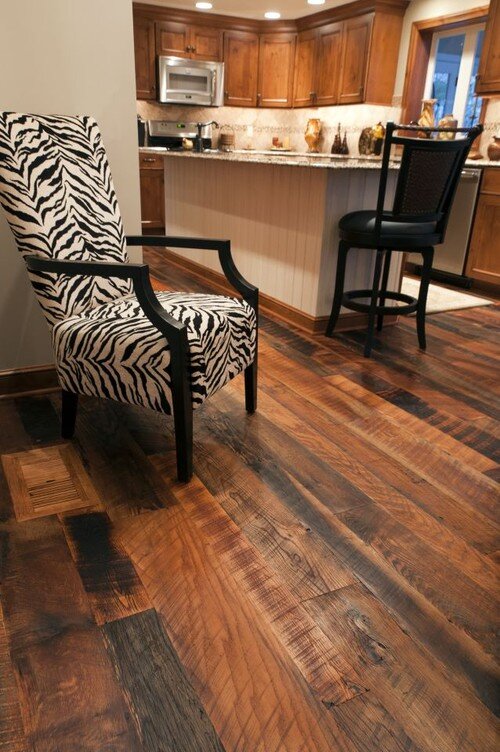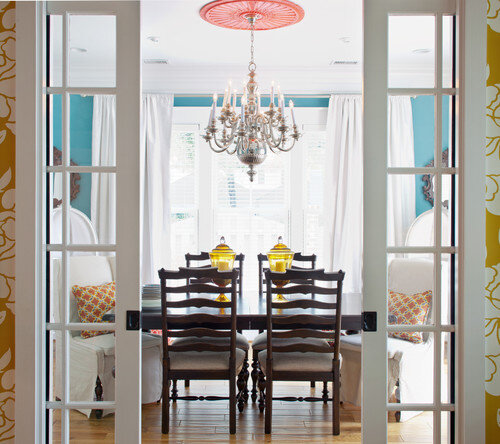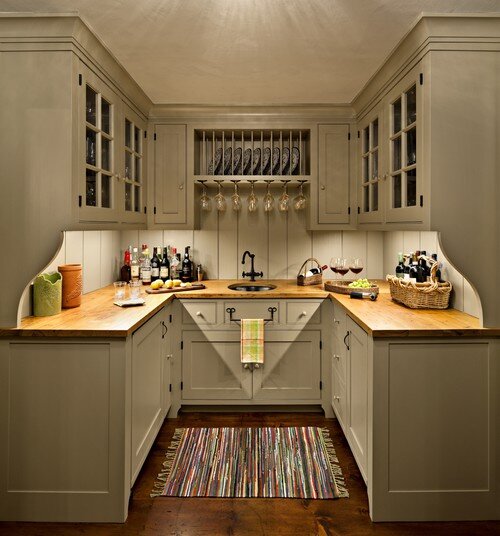
If a home renovation is in your future, your hands might be itching to wield that sledgehammer to knock down walls, rip up shag carpet, or oust those dark wood cabinets from your kitchen for good. Yet hold on there—have you considered what features in your home should be left well enough alone?
No matter what type of renovation project you’ve got planned, it’s smart to put down the chipping hammer when it comes to removing, painting over, or otherwise altering certain features. Sure, the feature might look like an eyesore at first glance, but with some work, it could end up adding character, charm, or integrity to your home, harking back to the period when it was built.
Curious about you should preserve before you pulverize everything in your path? Here are six common features that homeowners should consider leaving untouched, or even restore to their former glory.
1. Mantels or exposed beams

Hit pause before you send reclaimed wood from mantels or exposed beams to the dumpster. Under layers and layers of previous homeowner paint, you may find salvageable hewn wood that today’s homeowners are seeking.
With some elbow grease, these beautiful pieces of timber from the past can be uncovered, sanded, and stained. Alternatively, they can be left natural, to provide architectural interest or enhance a modern farmhouse or rustic look.
An original wood mantel that you decide to strip may even fit perfectly on your newly updated fireplace, saving you money.
2. Original hardwood flooring

I recently heard from homeowners who’d been in their home for 15 years before discovering—buried under layers of linoleum, vinyl, and tile—some beautiful hardwood flooring.
Original flooring can be refinished, which can be a huge cost saver. Also, since the wood floor is already in place, it can be stained to your preference.
Before you start any flooring projects, get a look under your current flooring. Have your contractor lift up every layer until you come to the subfloor. This is the only way to be sure someone hasn’t covered up attractive hardwood.
3. Millwork like rosettes, crown molding, and ceiling medallions

Even if they’re not the style you’re aiming for during renovation, preserving or repurposing a few items is a lovely way to retain original period details in your home. You may be able to reuse a ceiling medallion in your dining room, or save casings, trim, or moldings with elements like rosettes to reuse in the nursery. Consider restoring or repurposing these artisan treasures to show off to visitors.
4. Banquettes and butler pantries
Design bloggers like Emily Henderson Designs and Leanne Ford Interiors are reinventing spaces like the butler pantry and banquette, and homeowners who don’t have these are now asking for them.
Fine, you may not have a butler, but a butler pantry makes a fabulous coffee station. Meanwhile a banquette can be updated for use in an off-the-kitchen office space, breakfast nook, or kids crafts area.

5. Pocket doors, doorway arches, and rounded stairs

So if you spot these features in some old fixer-upper, rejoice! If there’s any way to consider leaving such features or reinventing them, talk to your contractor about preserving these one-of-a-kind treasures.
6. Crown glass and stained glass

If you have special glass, like crown glass (hand-blown in the 19th century into small diamonds or square panes) or stained glass (colored glass popular in the 1850s), every effort should be made to preserve these relics.
Colored glass, in particular, diffuses light and preserves privacy. Preserving old glass does take a professional for anything other than cleaning, but it’s well worth the investment. You can also relocate these windows to a bathroom or entryway, or even inside your home, for a pop of nostalgic color.
In sum, every period detail or element you find in your home merits a “Wait a minute!” moment and the question, “What can I do with this?”
